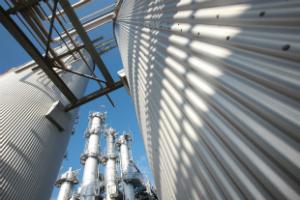 Traditional two-component polyurethane technology is combined with superficially modified nanosilica particles resulting in increased scratch and abrasion resistance in transparent, high-gloss coatings for plastic substrates.
Traditional two-component polyurethane technology is combined with superficially modified nanosilica particles resulting in increased scratch and abrasion resistance in transparent, high-gloss coatings for plastic substrates.
by Marco Heuer, Fabian Eichenberger and Dr. Sascha Herrwerth*
Scratches on the surface of plastics are a normal occurrence, are annoying, and often devalue what is supposed to be a high-quality object. Durable protection against mechanical erosion and retention of decorative appearance are of high importance. The main candidates to carry out the task are solvent-based, transparent, high-gloss 2K systems for substrates that require scratch resistance.
Such coating systems play an important role in meeting the demand for long-lasting quality, as high-gloss finishes (piano lacquered effect) are increasingly present in our lives. Components for car interiors, LCD TVs, tablet computers and smartphones are just some of the products whose appearance has changed from matte to high gloss in recent years.
This article presents an innovative nanosilica particle technology based on a sol-gel modified process. The product used Nanopol C 784 from Evonik Industries AG, is a pure solvent-based nanocomposite, 50% by weight for PU 2K systems in coatings. The advantage of this technology is that the product is easy to handle, can be incorporated into a polyol matrix directly and can be used in a wide range of applications.
This new nanosilica particle technology, therefore, can be used in conjunction with common binders to develop high brightness, and in 2K PU clearings with highly increased strength.
Causes and measurement of abrasion
In general, abrasion can be defined as the removal of matter from a surface, for example, paints, plastics, etc. Abrasion is caused by mechanical means such as rubbing or grinding and usually generates very fine particles (dust). In materials science, it is more commonly known as wear.
In high-gloss coatings, abrasion is often evident when scratches result in partially matte surfaces or fluted appearances. The reflected light is refracted in a diffuse way (fig. 1).
Figure 1 - Refelxión of light on matte and glossy surfaces.
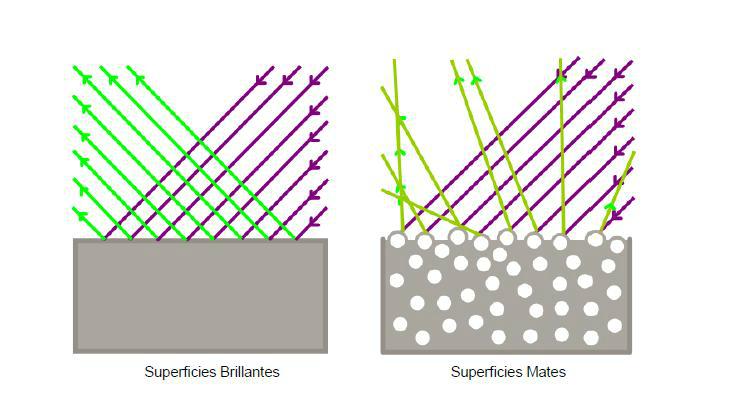
In the case of matte objects, abrasion leads to the breakdown of nano and micrometric structures on the surface that is perceived by the human eye as partial specular glow. When the surface is damaged, the previously diffused scattered light radiates directionally. The degree of abrasion can be determined by various methods by related applications. In the tests described here, methods from the automotive and electronics industries (slightly modified when necessary) were used to assess the abrasion resistance of surfaces:
- Test Crockmeter according to Daimler DBL 7384 ff. specification. (Dry abrasion with 9 micron sandpaper).
- Crockmeter test according to VW TL 226 specification and ff. (Dry abrasion and wet with cotton fabric).
- Pencil hardness test according to DIN EN 13523-4:2001
Chemical description of silica-nanocomposites
Silica nanocomposites are manufactured by a bottom-up and bottom-up charging process. In the first stage, the spherical particles of an aqueous silicate solution (water mirror) grow to the desired size of about 20 nm.
In subsequent reaction stages, these particles are modified on their surface, and purified of undesirable ions and by-products in a multistage process, and transferred to an organic matrix (e.g. a resin or solvent) (Fig. 2).
Figure 2 - Process of obtaining Syl Nanocomposites.
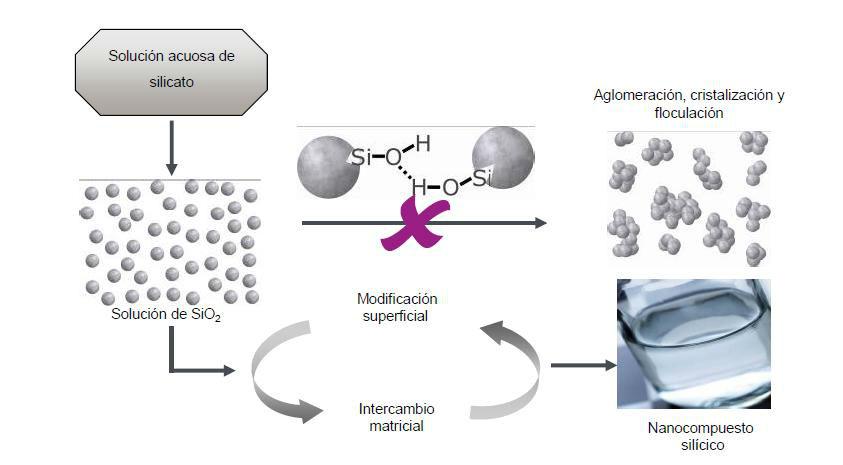
This allows the manufacture of transparent dispersions, free of sedimentation and with a low viscosity content of nanosilica in resins or solvents that are very easy to use without the need for separate dispersion methods.
In the chosen manufacturing process, nanosilica particles are present in a liquid matrix. The nanoparticles are never in the form of dust or dry particles that could be dangerous if inhaled. Numerous preliminary tests have shown that a particle size of 20 nm of the siliceous nanocomposite is optimal for facilitating addition, sustaining ideal viscosity and storage stability as well as respecting transparency in the cured coating.
Stokes' law describes the sedimentation rate of spherical bodies in liquids, which is determined primarily by the viscosity of the surrounding liquid, the difference between the densities of the liquid and the particle, and the square of the particle's radius.

• vp - sedimentation rate
• g - gravitational constant
• r - radius of particles
• ρp - particle density
• ρf - density of the surrounding liquid
• η - dynamic viscosity of the liquid
Because the particle diameter is very small (20 nm), the sedimentation rate is dominated by the square of the particle's radius and the difference in densities and viscosity of the liquid are of secondary importance. The sedimentation rate is therefore negligible and no sedimentation occurs during a storage period of at least 12 months.
The combination of the 20 nm particle size with a very narrow particle size distribution is important when it comes to transparency since a slight opalescence of the nanosilica particles in an organic matrix is perceptible from about 40 to 45 nm [1]. As a result of the "bottom up" process, no larger particles are generated during manufacturing. These larger particles could be problematic, particularly in the application of 2K and transparent PU lacquers on black substrates or bases to achieve "piano lacquer" glosses. Even slight deviations in particle size at 40 nm can cause the so-called "blue satin effect," where the desired optical depth is not reached.
The special modification of the nanosilica particles by the surface allows a very high affinity between the particles and the surrounding matrix [2]. This is a factor that prevents the separation, formation of aggregates, or agglomeration of the nanosilica. Rather, nanosilica particles are statistically distributed in the surrounding binder (Fig. 3) [3].
Figure 3 - TEM image of synthetic and amorphous nanosilica, distributed homogeneously in a resin matrix.
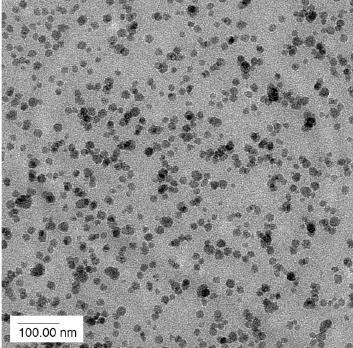
Due to this isotropic distribution, the physical properties of such coatings are independent of their dimension. Even if the nanosilica particles are worn by abrasion along with the surrounding resin matrix, the underlying remaining coating layer exhibits the same physical strength as in the beginning [4].
The test formulation
A mixture of a polyester polyol (OH 4.5% content) and an acrylic polyol (OH 4.5% content) was chosen as the typical formulation (Fig. 4) to achieve appropriate adhesion on the polycarbonate substrate, as well as adequate flexibility of the system to resist shocks or distortion during, for example, curing or thermal expansion of the substrate.
Figure 4 - Formulation.
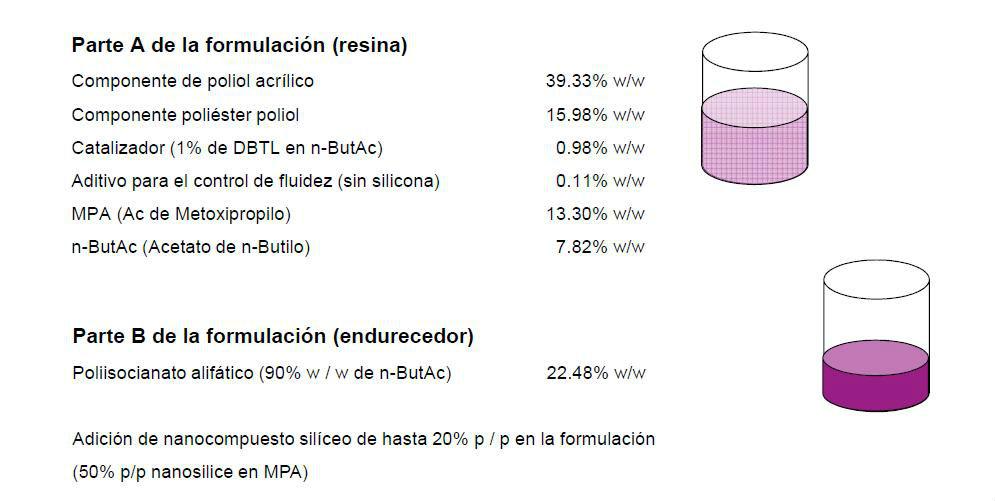
An aliphatic poly isocyanate (basic structure with HDI isocyanate structures) was chosen as the cross-linking component. To aid leveling, a small amount of a silicone-free fluidity control agent was added to the formulation. The nanosilica content was modified on the scale of 0.5 to 20% w/w of the total solids in the formulation. The lattice density remained unchanged and the ratio of polyol components to polyocyanate was identical in all test formulations.
It is convenient to combine the binder initially with the siliceous nanocomposite using a slight stirring before the other ingredients, and that all are stirred little by little in the formulation. Addition to "posterior" can cause agglomeration of nanosilica particles due to changes in polarity. The phenomenon manifests as turbidity of the liquid matrix or gel formation. The cause of destabilization of the particles in question can be, for example, by a "shock of solvents", which can generate attractive forces and form larger superstructures, in particular in the range 45 nm and even micrometers. Because the refractive index has changed the phenomenon of flocculation is evident.
The production of the coating
The applications were made with scraper on a black ABS substrate and dry film thickness of 30 to 40 microns identical in each case. The viscosity method was using DIN 4 mm; the flow time for each sample was uniform (25 to 27 sec.) and no adjustment with additional solvent was required. Unlike pneumatic spray application, scraper application allows for uniform and less applicator-dependent sample preparation.
After evaporation for 10 minutes at room temperature, curing is carried out to
carry out for 30 minutes at 80°C in a circulating air oven. The samples were then exposed for a week to room temperature before being subjected to scratching and abrasion tests. Such exposure substantially increases the density of the reticle (asymptotic cross-linking) of PU materials after passage into the furnace.
A pull-off cross-weft adhesion test produced no negative results. The results gave GT 0 on all coated ABS panels, regardless of nanosilica content.
VOC
The use of nanosilica particles allows the solids content to increase without changing the viscosity significantly. In this special case, the solids can be increased by replacing n-Butyl with n-Butyl acetate with nanocomposite content by up to 10% of the total of the already formulated white. With 50% w/w of nanosilica, the compound reports higher content of non-volatile compounds compared to the original formulation.
Therefore, in regions sensitive to "VOC," as well as in their industries, it becomes a potential alternative for the reduction of solvent content in PU 2K varnishes without drawbacks such as lack of transparency or "orange peel" caused by lack of fluidity.
Water condensation test
The effect of condensation on a surface was investigated using the critical water condensation test according to DIN 50017, which is carried out at 40°C at 1 ATM of saturated steam. Continuous exposure of water on the surface of the coating can lead to the penetration and infiltration of water molecules into the coating matrix which is evidenced by increasing blistering in both number and size.
After a 1000-hour dive, the samples showed no difference. All coated materials exhibited good strength with a degree of blistering of m0g0. The adhesion test after the water condensation test was also not affected. Tests with razor comb and duct tape showed a value of GT 0 on all ABS panels.
Test results
The "Crockmeter" type abrasion test, test according to Daimler Supplier's DBL 7384 ff Specification, showed that the strength of the coated surfaces increased with the increase in nanosilica content in the formulation up to 110 (Fig. 5).
Figure 5 - Crockmeter Test – Daimler Specification - Dry scratch resistance can be increased by more than 110%.
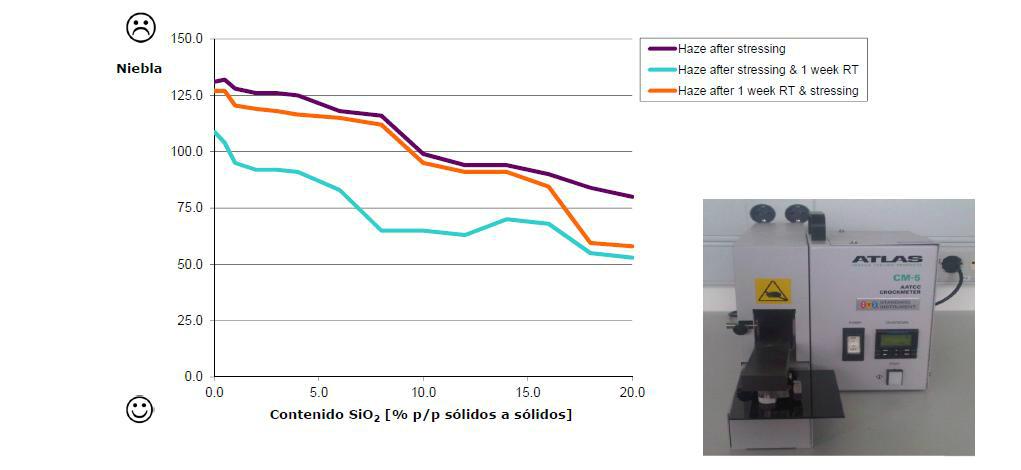
In the results of the test "Crockmeter" according to VW TL 226 et seq. the deviation could be significantly improved by 1.5 units in the grayscale (Fig. 6).
Figure 6 - Crockmeter Test – VW Specification – Grayscale can be increased by up to 1.5 units.
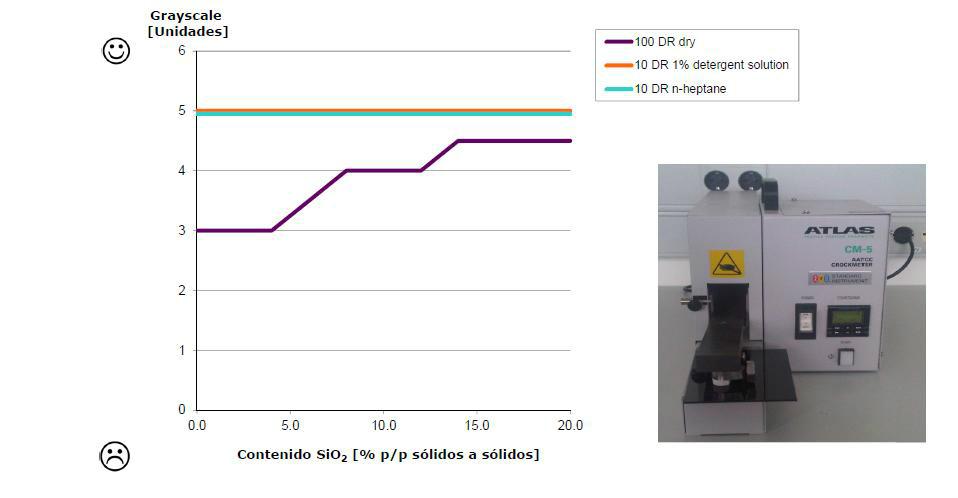
The pencil hardness test according to DIN EN 13523-4:2001 also showed an increase of up to 2 units (Fig. 7).
Figure 7 - Pencil Hardness Test - Pencil hardness can be increased by up to 2 units.
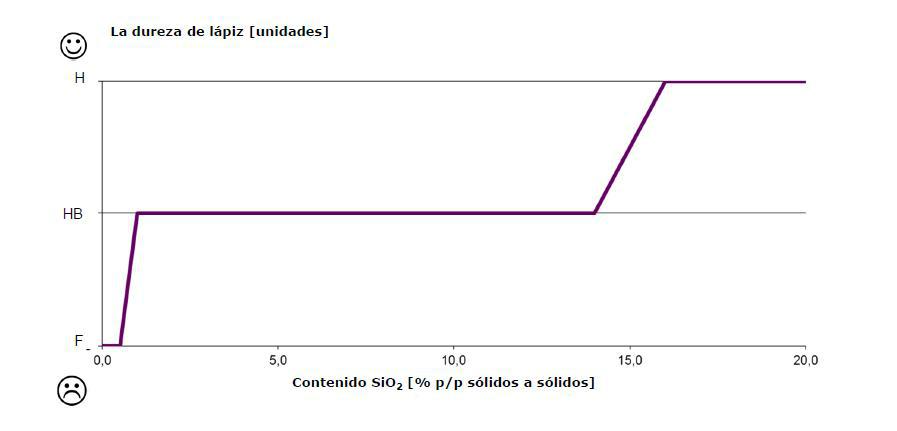
For the various nanosilica contents in the cured formulations, no differences in transparency or brightness were detected, nor was any turbidity appreciated.
Summary
The use of the siliceous nanocomposite technology described above allows an increase of up to 110% in abrasion resistance and hardness. As a rule, the use of 5 to 10% w/w is sufficient to achieve these advantages without compromising transparency, brightness, or resistance in the water condensation and coating adhesion test. It is also possible to increase the total solids content of the solvent system which is in line with voC standards. Therefore, in high-gloss, solvent-based 2K PU egg whites, abrasion resistance is substantially benefited without affecting other film properties.
BOX
Results at a glance
• Nanosilica particles can be easily incorporated into high-gloss PU 2K varnishes without impairing transparency.
• Abrasion tests show that nanosilica particles in PUR 2K varnishes can lead to improvements of up to 110%.
• In the recesses of the reticle, the nanosilica particles are statistically accommodated to give rise to a lasting barrier effect against mechanical and chemical effects.
Literature
[1] C. Vu, O. LAFERTE, A. Eranian, European Coatings Journal 2002 (1-2), 64.
[2] L. N. Lewis, D. Katsamberis, J. Appl. Polym. Science. 1991, 42, 1551.
[3] J. Adam, T. Adebahr, M. Pyrlik, C. Roscher, R. Wieczorreck, C. Eger (hanse chemie AG), EP 1 366 112 B1, 2002
[4] C. Roscher, European Coatings Journal 2003 (4), 138.
* Marco Heuer
He studied chemistry and coating technology at the University of Paderborn and completed his bachelor's degree in chemical engineering in 1995. After several years in the paint industry, in 2006 he joined nanoresins AG and hanse-Chemie AG in Geesthacht, both of which were acquired by Evonik Industries AG in 2011. Since May 2011, Marco has served as Senior Technical Service Manager for the Nanoresins segment in the "Coatings & Additives" Business Unit.
* Dr. Sascha Herrwerth
He studied chemistry at the Ruprecht-Karls University of Heidelberg and the University of Bristol. He received his PhD in 2002 in Heidelberg for his work called "Self-added Monolayers of Oligoether Compounds in Gold and Silver." In 2003, Sascha joined Evonik Industries AG and since 2011 has been Head of the Technical Service for Special Resins in the "Coatings & Additives" Business Unit.
* Fabian Eichenberger
He studied bio and nanotechnologies at the South Westphalian University of Applied Sciences, where he graduated with a Diploma (FH) in 2009. After working for two years in the coatings industry with an automotive finish manufacturer in the R&D department, in 2011 Fabian joined Evonik Industries AG. He currently serves as Technical Service Manager of the Nanoresin products group.
Photo: courtesy of Evonik.
























Leave your comment